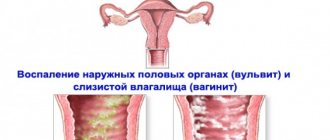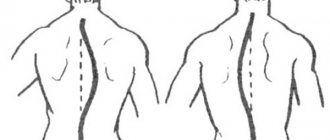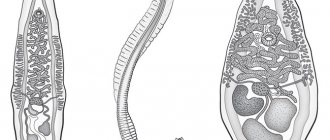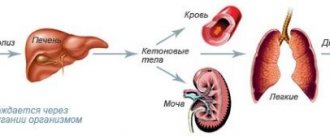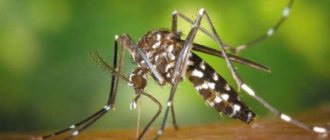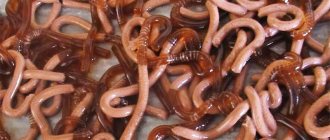Allergy is a chronic disease of the immune system, characterized by increased sensitivity of the body to the effects of various antigens (allergens). During contact with an irritating substance, the body experiences increased production of histamine, a biogenic mediator that triggers immediate processes in the body that are symptoms of the disease. It is histamine that causes watery eyes, red eyes, sneezing, skin rashes and other signs of allergic reactions, so most medications have a therapeutic effect due to their antihistamine action.
How to cure allergies forever
You can also treat allergies using traditional methods, but it is worth remembering that herbal components are substances with increased allergenic properties, so you should consult a doctor before using them. It is impossible to cure allergies forever, but you can significantly reduce the risk of exacerbations and achieve a long period of remission. This result is achieved mainly by stimulating immune reactions and increasing the protective functions of the body, which itself can cope with the influence of pathological provoking factors.
Food allergies and food intolerances: learning to distinguish between them
Many people confuse these two concepts because their symptoms are very similar. The allergic effect manifests itself quite quickly, its intensity depends on the amount of the allergen. And intolerance to any product can be protracted. An allergy is a “wrong” functioning of the immune system, which perceives ordinary foods as an enemy. With food intolerance, the immune system works correctly, but the food is not fully or partially absorbed by the body. The reasons for this may be an immature digestive system, diseases of the gastrointestinal tract, or enzyme deficiency.
Common signs of intolerance are:
- indigestion;
- bloating;
- excessive gas formation;
- nausea, vomiting;
- pain in the abdomen.
An allergic reaction is often manifested by gastrointestinal disorders, but in addition to them, there are also skin and respiratory symptoms; Quincke's edema or anaphylaxis may develop, which is not the case with intolerance.
It can be difficult to determine on your own what exactly you are dealing with. To do this, you need to contact a competent specialist and undergo diagnostics. This way it will be possible to make an accurate diagnosis.
Folk recipes
You can get rid of the disease using folk remedies. The following recipes are among the most effective. Shilajit helps a lot. It is diluted in water, rubbing the affected areas of the skin. Take orally with minimal concentration. The average course of treatment can last up to three weeks.
The patient can be cured with eggshell powder. It is diluted with lemon juice and taken a quarter teaspoon after meals.
Natural juices help get rid of the disease. They are squeezed from fresh vegetables - beets, carrots, cucumbers. Dilute with distilled water, take a quarter glass 30 minutes before meals.
Article on the topic: Allergy to silver: causes, symptoms, diagnosis and treatment
Types of allergies
As the immune response manifests itself, the following types of reactions are distinguished:
- hidden: an allergy to food is not determined immediately, but after a sufficiently long period of time, due to the accumulation of the allergen in the body;
- pronounced: negative consequences appear immediately after consuming the allergen.
According to the nature of the manifestations, a hidden allergy can be:
- year-round: the reaction is observed constantly, even when consuming a small amount of the allergen;
- spasmodic: the immune system negatively perceives foods that were previously perceived normally;
- temperature: symptoms increase significantly even with the slightest hypothermia of the body;
- mixed: pathology is provoked not only by consuming the product, but also by its smell (oral), or by contact with it (contact).
In most cases, there is an immediate response to a product that irritates the immune system.
The first signs of the disease are:
- slight swelling of the mucous membranes, nasal discharge, lacrimation;
- nausea, vomiting, diarrhea, colic;
- skin rashes, itching;
- headache, general weakness, increased body temperature;
- Quincke's edema;
- anaphylactic shock.
During the course of the reaction, the symptoms intensify, and if immediate assistance is not provided, death is possible.
Products with a high degree of danger
Milk and dairy products
You need to understand that lactose intolerance and whole milk allergy are two different things. Goat's milk has a higher level of allergenicity, unlike cow's milk. To avoid an allergy to milk, you need to stop consuming not only it, but also all other products that contain it.
You will have to remove from your diet: cheeses of various types, curd products, butter. The dietary restrictions do not end there; you will have to stop eating even those products that contain little milk. After all, in order to cause an allergic reaction, it does not matter how many allergens are in the food. It is not recommended to eat: confectionery, pasta, flour products.
People who struggle with stomach and intestinal diseases are not recommended to consume whole milk. The reason for this is the lack of enzymes that process lactose. In this case, fermented milk products will be useful. It is recommended to add to the menu:
- Poultry, lean fish.
- Vegetable oil.
- Pork and lamb meat.
- Bread products that do not contain milk.
Cereals
Cereal products contain gluten. People who cannot tolerate this microelement should not eat: Corn, rice, barley, wheat, rye. And also bread, pasta, buns, bread. You can include in your diet:
- Meat products.
- Legumes.
- Vegetables and fruits.
- First meal.
- Buckwheat.
- Eggs and milk.
Fish and seafood
A fish allergy can even cause anaphylactic shock. All types of seafood, as well as sea and river fish, must be removed from the menu. It is known that seafood contains a large amount of iodine; in order to maintain its level in the body, you need to eat other foods that contain it.
Eggs
If eggs are added to chicken broth or combined with poultry, it causes a severe allergic reaction. It is the egg white that is the allergen. You will have to stop eating: mayonnaise, bread, various sauces, pasta and baked goods. You can safely include in your diet:
- Quail eggs.
- Dairy products.
- Low-fat fish.
- Meat products.
- Bird.
- Vegetables fruits.
- Various cereals.
Other products
Here are some more highly allergenic foods:
- Vegetables: tomatoes, eggplants, bell peppers, celery, carrots.
- Fruits: oranges, lemons, tangerines, persimmons, melon.
- Strawberry.
- Mushrooms.
- Honey.
- Nuts: almonds, peanuts, cashews, hazelnuts, walnuts.
- Coffee, chocolate, cocoa.
- Garlic.
Allergenic products
All products have varying degrees of impact on the body.
Product allergenicity table
| Degree | Products |
| highly allergenic | chocolate, milk, honey, peanuts, citrus fruits: lemon, orange, grapefruit, tangerine, fish, berries, fruits, vegetables that are red or orange in color: raspberries, currants, strawberries, carrots, tomatoes |
| average allergenicity | legumes, cereals, peaches, potatoes, pork |
| low-allergenic | apples, zucchini, gooseberries, lamb |
It is a fate that sometimes negative signs are caused not by the product itself, but by the dyes, flavors, and stabilizers in its composition.
What is cross and pseudo-allergy?
Earlier we talked about true allergies, but there is also pseudo-allergy, which is accompanied by the same symptoms, but is caused by excessive consumption of the product. In such cases, there is no reaction with dosed consumption.
There is also cross allergy, which is considered the most dangerous. It occurs not just for individual products, but for all products with a similar amino acid composition. For example, if you are allergic to cow's milk, you may have a reaction to the milk of other animals and its derivatives, to veal and beef. Cross-response tables have now been developed, thanks to which you can understand the relationship of a particular food. In addition, this phenomenon can also occur in response to non-food allergens, such as plant pollen. Let's say watermelon and ambrosia are interconnected in this way.
List of cross allergens
Diet for drug allergies
If an allergy to drugs occurs, the diet is aimed at removing the breakdown products of inappropriate drugs from the body as quickly as possible.
If the condition is severe, a “strict” diet is recommended.
The menu for an allergy to aspirin suggests a complete rejection of any citrus fruits, peaches, melons, peppers, and potatoes. In case of an allergy to antibiotics, the diet excludes strawberries, mushrooms, grapes, processed foods, cheese, nuts, eggs, pineapples, everything spicy and smoked.
Two types of diets are used to treat negative reactions to medications:
- nonspecific (basic) - make sense during periods of exacerbation, especially if the allergen has not been identified. They reduce the load on the digestive system and significantly reduce painful symptoms;
- specific (elimination) - they are selected depending on the type of stimulus, which is completely excluded from the diet. This type of diet is also used during a sharp exacerbation.
Causes of food allergies in adults
In children, allergies are more common and are caused by even more factors. Everything that manifests itself in adulthood is simply a transformation of the original predisposition to allergic reactions.
Reasons for improper functioning of the immune system in adults:
- heredity: immediate relatives have a pathological reaction;
- poor ecology: urbanization significantly increases allergies, smog, gases, chemicals in the air affect food and human health in general;
- decreased immunity due to bad habits: smoking, alcohol consumption;
- disrupted wakefulness and sleep patterns: lack of rest provokes pathogenic processes in the body;
- concomitant diseases of the digestive organs, kidneys, liver, heart: impaired microflora or the performance of internal organs provokes “aggression” of the immune system;
- the presence of parasites in the body: their metabolic products have a detrimental effect on vital processes in the body;
- deficiency of vitamins A, E, PP: weakened immunity is more susceptible to failures;
- taking sensitizing medications and cosmetics.
- poor nutrition.
Treatment and prevention of allergies
To avoid allergic reactions to foods, you need to follow a certain diet. As soon as a person has decided what exactly causes his allergy, the first thing he does is exclude it from his daily menu.
In addition, you need to ensure that the food you eat or the products you buy in the store does not contain an allergen. There are people with allergies so severe that they need to carry special bracelets with them. If even a small amount of an element that causes an allergic reaction enters the body, the patient can immediately call an ambulance. If the allergy does not cause anaphylactic reactions, then it is easy to eliminate the symptoms with the help of medications.
Symptoms and signs of food allergies
An allergic reaction can have various manifestations. It depends on the individual characteristics of each person.
| Localization of manifestations | Signs |
| cutaneous | hives, red itchy spots, blisters that eventually burst, roughness, inflammation, swelling |
| gastrointestinal | stool disorders, nausea, vomiting, severe gas formation, bloating, abdominal pain |
| respiratory | runny nose, lacrimation, cough, swelling of the mucous membranes of the mouth, nose, pharynx |
At these moments, a person’s pulse and heart rate also increase, and sweating increases. Headaches and dizziness may occur. Allergy sufferers, especially children, become extremely restless and irritable.
During the immune response, anaphylactic shock may develop, which can be recognized by the following symptoms: mild tingling in the extremities, rash, slight swelling of the nasopharynx, brochospasm, Quincke's edema, swelling of the upper respiratory organs, vomiting, increased body temperature, respiratory distress, convulsions, decreased blood pressure, stopping breathing.
Rash on the body
Allergic conjunctivitis
Quincke's edema
Allergic rhinitis
Anaphylaxis is the most dangerous condition as it can develop in a matter of minutes. Failure to provide assistance in a timely manner can lead to death.
Diagnostics
When the first symptoms occur, you must immediately contact a specialist who will conduct an examination, interview, and offer additional diagnostic methods to make the correct diagnosis. Initially, you need to contact an allergist. It is he who will be able to help determine the causative allergen. Based on the research results, the allergist can, if necessary, refer you for consultation to other specialists.
A gastroenterologist will help with diseases of the digestive system, because in food pathologies they are almost always present. A nutritionist will be able to choose the right nutrition, taking into account the characteristics of the body, and create a diet, replacing allergenic foods with others with the same beneficial substances. Proper nutrition is the key to successful treatment for immune indignation.
In case of allergies, laboratory tests are carried out:
- general blood test: an increase in the level of basophils and eosinophils indicates the presence of an allergic reaction;
- biochemical blood test for general and specific immunoglobulin E: helps to identify the allergen.
Skin tests can identify a specific allergen within 20 minutes:
- tests using applications: special strips on which certain allergens are applied are applied and fixed to the body, and the result is assessed after two days;
- scarification test: a certain allergen concentrate is applied to the skin and a scratch is made at the application site with a scarifier, the result is assessed after 20 minutes;
- a prick test is the application of a concentrate to the skin, making a 1 mm puncture at the site of application with a special instrument;
- provocative methods: the allergen is applied to the mucous membrane of the eyes or nose, or inhalation is used to introduce the pathogen.
It is also possible to conduct an endoscopic examination of the intestine. After all, external manifestations are just the “tip of the iceberg”.
The simplest way to identify an allergen is an elimination diet. The doctor suggests keeping a food diary in which all the food consumed, its quantity and the body’s reactions will be recorded. If negative symptoms have been noticed for any food, then it should be excluded for a while. After allergic manifestations disappear, you should try again introducing the same product in a minimal amount. If the symptoms recur again, then the causative allergen has been found and should be excluded. With this diet, you can independently identify unwanted foods and eliminate them.
Diagnostic methods
1. Cytological examination
This involves analysis of mucous membranes. To do this, a swab is taken from the nose or mouth. Cytological examination is the simplest, fastest and most inexpensive way to diagnose nasal allergic pathology. In addition, one analysis can determine the nature of the inflammation: an allergic reaction, viral complications, fungal diseases or a parasitic infection.
2. Skin tests
Allergen drugs are injected into the patient's skin or under the skin in small samples. Each injection is numbered, and the result is analyzed. You can test several dozen stimuli at a time. Skin tests are performed when the medical history and general examination do not allow the exact cause of allergic reactions to be determined. The method is most accurate in diagnosing food allergies with symptoms such as conjunctivitis and rhinosinusitis.
3. Provocative tests
The technique involves direct contact of mucous membranes with the suspected allergen. It is used when it is necessary to document the body's response to a stimulus. These documents are necessary for obtaining disability, recognition of professional suitability or incompetence and in other official cases.
4. Radioallergosorbent test (RAST)
There are two types of such studies: radioallergosorbent testing and an improved technique using enzyme-labeled IgE antibodies to detect the binding of IgE serum to a specific allergen. Both methods are referred to by the abbreviation RAST.
Tests are carried out when other options for diagnosing food allergies are ineffective or impossible. It is prescribed when the patient is taking medications that distort the results and in the presence of skin diseases that make diagnosis difficult. For testing you need to donate blood.
5. Enzyme-linked immunosorbent assay (ELISA)
Laboratory immunological method for determining low molecular weight compounds as an antigen-antibody reaction. The study material is blood. The analysis is highly accurate and allows simultaneous testing for several dozen allergens.
6. Test using CAP-system, MAST-CLA-system
Allergy tests CAP-system and MAST-CLA-system work with all types of allergens and allow you to simultaneously test several dozen irritants. The level of allergen-specific IgE in serum is measured. For diagnosis, the patient's blood is required, from which the device aspirates the serum for subsequent testing.
Treatment
In some cases, the doctor uses immunotherapy for treatment. This technique is not suitable for everyone, and they resort to it only when it is impossible to avoid the allergen in everyday life, that is, it is vital. The course of treatment is carried out under the strict supervision of a competent specialist with experience in this field. The patient is injected with the causative allergen in minimal doses. During treatment, its amount is gradually increased, this is how the immune system is “trained”. In many cases, this technique helps to completely eliminate allergic signs to a specific food. However, this method is risky, since the immune system is a very complex mechanism, and interfering with it is dangerous: serious diseases can occur.
There are no other methods of therapy at the moment; drugs are used only to relieve symptoms.
Symptomatic pharmacotherapy
In moments of exacerbation, it is necessary to completely eliminate foods that cause negative signals from the body. Next, the doctor prescribes antihistamines. The form of the medicine depends on the age of the patient. If this is a child, then you should choose drugs in the form of drops or suspensions. But for an adult, tablets are suitable. These can be Tavegil, Eden, Fenistil, Zyrtec and others.
If the disease progresses, then along with systemic drugs, local drugs are often used - antiallergic ointments, gels. In more severe forms of the disease, hormonal drugs may be prescribed: prednisolone, Advant, hydrocortisone, sinaflan and others. The drug and its dosage are prescribed by the attending doctor, taking into account the nature and subtleties of the pathology.
To relieve intoxication and eliminate allergens, treatment is often carried out with enterosorbents, such as smecta, enterosgel, lactofiltrum, polysorb. These products help not only remove harmful substances, but also improve the intestinal microflora, which is also necessary for this disease.
If severe swelling or anaphylactic shock occurs, call an ambulance immediately.
Diet
The main point in treatment is adherence to a hypoallergenic diet. During an exacerbation, it is necessary to remove from the diet foods that cause reactions and foods with a high degree of allergenicity. It must be observed for at least two months. And then you need to completely eliminate the pathogen from your daily diet.
Folk remedies
In many cases, folk recipes have proven themselves to be positive.
For skin manifestations of allergies, ointments, masks, applications, rubs, and baths are used. The following are great for this: chamomile, calendula, string, bay leaf, nettle, parsley, aloe, essential oils, green tea, cucumber, cabbage and other ingredients.
Herbal infusions are effective when taken orally. Chamomile infusion and tea with calendula and yarrow have proven themselves to be excellent. You will need 50 grams of herb per glass of water. Pour boiling water over the herb and leave for two hours; take the decoction four times a day, several sips.
Traditional medicine methods can be used as an auxiliary treatment; all actions must be coordinated with the attending physician to prevent the situation from worsening.
The role of cleansing in the treatment of allergies
Most allergists are confident that allergic reactions are closely related to contamination of the body, so it is advised to begin treatment with cleansing the body. This primarily concerns the intestines, liver, blood and lymph. Various methods can be used to cleanse the intestines, including:
- therapeutic fasting;
- intestinal cleansing preparations;
- cleansing enemas;
- enterosorbents.
In case of food allergies, doctors always prescribe the enterosorbent Enterosgel in a course to remove allergens. The drug is a gel soaked in water. It gently envelops the mucous membranes of the gastrointestinal tract, collects allergens from them and removes them from the body. An important advantage of Enterosgel is that allergens are firmly bound to the gel and are not released in the lower intestines. Enterosgel, like a porous sponge, absorbs mainly harmful substances without interacting with beneficial microflora and microelements, so it can be taken for more than 2 weeks.
Therapeutic fasting is allowed only if the person does not have a history of serious chronic diseases and eats a nutritious and varied diet. Its duration should not exceed 24 hours. It is best to start fasting in the evening. The next evening, before going to bed, you can drink a little oatmeal jelly or rice water. During the day, you can drink only still mineral water, herbal infusions and green or chamomile tea without sugar. For three days after completing the fast, the diet should consist of boiled vegetables and fruits (can be replaced with baked dishes), boiled meat, and liquid porridges with water. You can repeat the procedure no more than 2 times a month.
You can start getting rid of allergies with therapeutic fasting
A more gentle way to cleanse the intestines are enemas and medications. These include:
- "Moviprep";
- "Fortrans";
- "Duphalac";
- Microlax.
You can cleanse the liver with Lecithin and Hepar. These drugs contain phospholipids that restore the damaged cellular structure of hepatocytes. Drugs in this group effectively cleanse the liver of toxins and various toxic substances, which include allergens.
Phytocomplex Gepar for liver cleansing
Enemas for colon cleansing
Recipe 1 . Heat 100 ml of sea buckthorn or vaseline oil in a water bath to a temperature of 28° and carefully insert into the rectum. The procedure is best done in the evening and after it, do not eat or drink anything until the morning. The course of treatment is 10 days.
Recipe 2 . Pour 4 tablespoons of chamomile into two glasses of boiling water, cover with a lid and leave for 1 hour. Use the resulting infusion for a cleansing enema, dividing it into two times: morning and evening procedures. The product can be administered using a syringe or a rubber bulb with a tip made of soft materials. Duration of therapy – 3 days.
Recipe 3 . Add 1 spoon of salt and half a teaspoon of soda to 180 ml of warm water. Before introducing the solution, it must be thoroughly stirred so that salt particles do not settle to the bottom of the syringe. You need to do a salt enema every day for 3-4 days.
Exercises after fluid administration
Cleansing blood and lymph
Blood purification is usually performed in a hospital setting using a procedure called plasmapheresis. First, the doctor takes part of the blood, after which the liquid structures are cleansed of poisons, toxins and allergens and, using a special system, are returned to the systemic bloodstream.
Important! Plasmapheresis is a fairly effective procedure for the treatment of allergic reactions, but it should only be carried out in a specialized clinic by experienced specialists. Plasmapheresis is a procedure with an increased risk of infection (through blood), so the choice of a medical institution must be approached very responsibly.
Plasmapheresis process
Prevention
It is always easier to prevent a disease than to deal with its consequences. To do this you need:
- Completely eliminate foods that cause allergies.
- If you are prone to allergies, try to choose foods with a low-allergenic composition.
- Keep a food diary.
- Select products according to age criteria. Correctly introduce complementary feeding and supplementary feeding to the child.
- Try to eat food from your own garden. This way there is less risk that a negative reaction will occur.
- Carefully monitor your health and promptly treat emerging diseases.
- Spend as much time as possible in favorable environmental conditions.
- Observe the work and rest schedule. An exhausted body malfunctions faster.
- Take medications only as prescribed by a doctor.
- If necessary, replenish the body's reserves with the help of vitamin complexes.
- Minimize stressful situations.
Main allergens
- Pollen of flowers, medicinal plants and trees;
- Animal wool, natural bed linen fillers;
- Street and household dust containing microscopic mites;
- Mold, fungal spores formed in large quantities in rooms with high humidity;
- Allergens that penetrate the skin - hair dye, detergents, nickel, rubber;
- Food;
- Natural juices squeezed from fruits and vegetables;
- Medicines, antibiotics, anesthetics;
- Bites of blood-sucking insects;
- Saliva entering the bloodstream after bites from wild or domestic animals;
- Aspen, bee venom, bee products.
Article on the topic: The most popular types of allergies in [y] year
Swelling of the tongue due to allergies

